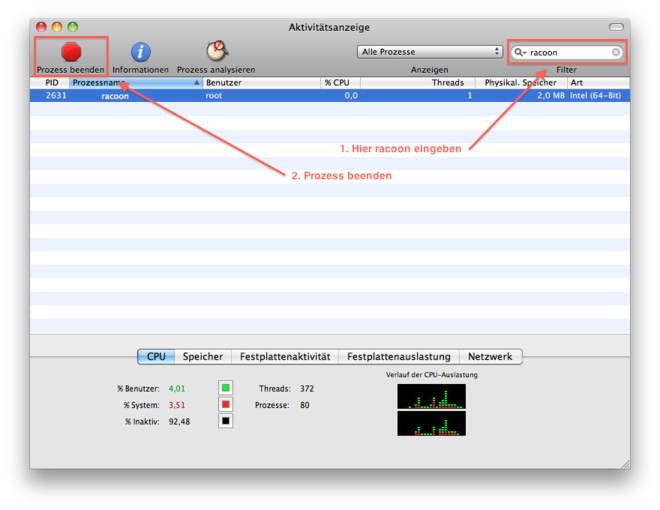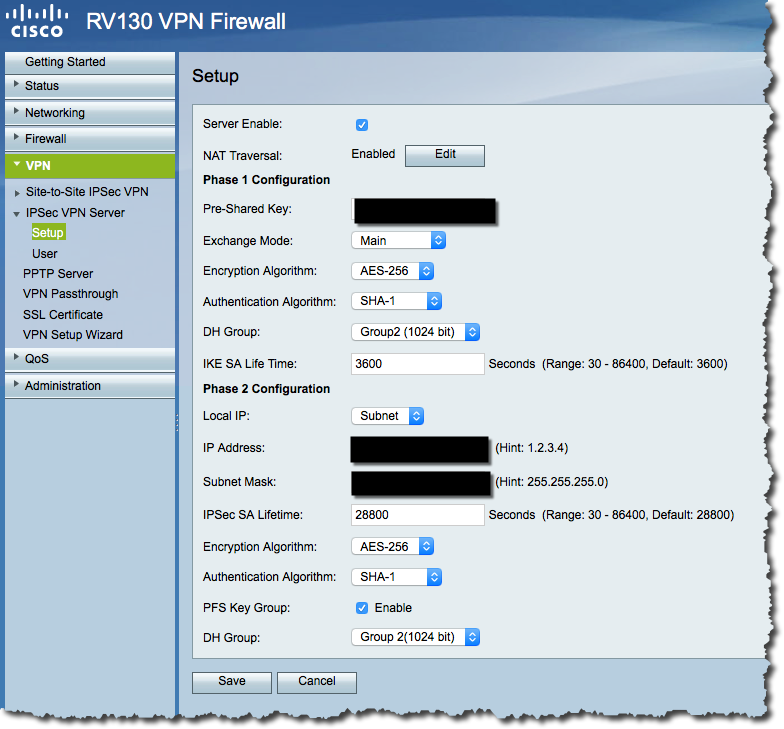- Cisco Anyconnect Secure Mobility Client Free Download
- Vpn Client Mac Cisco Free Download
- Vpn Client For Mac Cisco
Hello all, We have an issue with McAffe EPO engine v3.6.0.574 while rebuilding users' GuIDs for the users connected through VPN with VPN client v4.8.02.0100. The EPO rebuilds the GuID using the user's MAC address. The problem is that the VPN client v4.8.02 assigns the same MAC address (00-05-9A-3C-7. Setting up the Cisco VPN client. Download the Cicso VPN client for macOS from our Self Registration page. Launch the downloaded installer file and click through the screens to complete the installation. Go to your Applications folder and open the Cisco folder. Double-click on the Cisco.
Reading Time: 2minutesStarting with Mac OS X 10.6, it is now possible to connect to a Cisco IPSec VPN without having to download any extra software.
Main Set Up Steps
Before you begin please have your VPN IP address, your username, password, shared secret, certificate, and/or group name ready. If you do not have this information please contact support using the options at the bottom of this page.
Open System Preferences and click on the Network icon:
On the Network screen, click on the + symbol in the lower left:
On the following screen click on the Interface drop-down menu and choose VPN:
Click on the VPN Type menu and choose Cisco IPSec:
Give your new VPN connection a label in the Service Name text field (1) (this can be any name you choose) and click Create (2):
Cisco Anyconnect Secure Mobility Client Free Download
Back on the main Network screen, click on your new VPN name in the list on the left side. Enter your VPN server's IP address, your username (Account Name), and password:
If you leave the checkbox marked Show VPN status in the menu bar checked a new menu bar icon will appear that allows you quickly turn the VPN connection on and off.
Click on the Authentication Settings button and enter the VPN's Shared Secret, Certificate, and/or Group Name. Click OK when done:
Depending on your network and VPN configuration you may now start using your new VPN connection. If you need to add settings for DNS servers or Proxies when using the VPN please see the screenshots below for reference.

Optional Set Up Steps
Video converter download for mac free. The settings below can be reached by clicking the Advanced… button when viewing your VPN connection in the network list.
DNS Servers and Search Domains

Proxy Settings
Liquid Web's Heroic Support is always available to assist customers with this or any other issue. If you need our assistance please contact us:
Toll-Free 1.800.580.4985
International 517.322.0434
support@liquidweb.com
https://my.liquidweb.com/
Related Articles:
Cisco AnyConnect is the recommended VPN client for Mac. The built-in VPN client for Mac is another option but is more likely to suffer from disconnects.
Overview
Stanford's VPN allows you to connect to Stanford's network as if you were on campus, making access to restricted services possible. To connect to the VPN from your Mac you need to install the Cisco AnyConnect VPN client.
Two types of VPN are available:
Download RealTek network driver for MacOSX/Darwin for free. Darwin x86/PPC/MACOSX driver for RealTek network cards (RTL8139). Purpose: to increase the number of compatible network cards that work with Apple's Opensource Operating System, Darwin. Realtek driver free download - Digidesign CoreAudio Driver, USB Audio ASIO driver, IOXperts USB WebCam Driver, and many more programs. Update Mac OS 8.5 or 8.5.1 to OS 8.6 for improved system. Realtek rtl8723be mac os x. Below are the driver packages to install various wireless devices including Realtek chips on Real Macintosh & Hackintosh machines on Mac OS 10.9 t o10.15 Caralina. Please visit the git hub for these devices here (real mac) and here (Hackintosh) for more information and support. Free Realtek Semiconductor Mac/OS X 10.2 Version 1.13 Full Specs. Average User Rating: 1 User Votes 5.0. Mac/OS X 10.2 Additional Requirements: Mac OS X 10.2 or higher.
- Default Stanford (split-tunnel). When using Stanford's VPN from home, we generally recommend using the Default Stanford split-tunnel VPN. This routes and encrypts all traffic going to Stanford sites and systems through the Stanford network as if you were on campus. All non-Stanford traffic proceeds to its destination directly.
- Full Traffic (non-split-tunnel). This encrypts all internet traffic from your computer but may inadvertently block you from using resources on your local network, such as a networked printer at home. If you are traveling or using wi-fi in an untrusted location like a coffee shop or hotel, you may wish to encrypt all of your internet traffic through the Full Traffic non-split-tunnel VPN to provide an additional layer of security.
You can select the type of VPN you want to use each time you connect.
Vpn Client Mac Cisco Free Download
Install the VPN client
- Download the Cisco AnyConnect installer for Mac.
- Double-click the InstallAnyConnect.pkg file to start the Cisco AnyConnect Installer wizard.
- When the Welcome window displays, click Continue.
- Select your hard drive as the destination where you want to install Cisco AnyConnect and then click Continue.
- Click Install to perform a standard installation of the software.
- At the prompt, enter your administrator account password for the Mac and click Install Software.
- When the software has finished installing, click Close.
Connect to the Stanford VPN
- To launch the VPN client, open your Applications folder and navigate to Cisco > Cisco AnyConnect Secure Mobility Client.app.
- When prompted for a VPN, enter su-vpn.stanford.edu and then click Connect.
- Enter the following information and then click OK:
- Group: select Default Stanford split- tunnel (non-Stanford traffic flows normally on an unencrypted internet connection) or Full Traffic non-split-tunnel (all internet traffic flows through the VPN connection)
- Username: your SUNet ID
- Password: your SUNet ID password
- Next, the prompt for two-step authentication displays.
- Enter a passcode or enter the number that corresponds to another option(in this example, enter 1 to authenticate using Duo Push on an iPad). You may have to scroll down the list to see all of your options. Then click Continue.
- If your only registered authentication method is printed list, hardware token, or Google Authenticator, the menu does not display. Enter a passcode in the Answer field and click Continue.
- Click Accept to connect to the Stanford Public VPN service.
- Once the VPN connection is established, the Cisco AnyConnect icon with a small lock appears in the dock.

Disconnect from the Stanford VPN

Optional Set Up Steps
Video converter download for mac free. The settings below can be reached by clicking the Advanced… button when viewing your VPN connection in the network list.
DNS Servers and Search Domains
Proxy Settings
Liquid Web's Heroic Support is always available to assist customers with this or any other issue. If you need our assistance please contact us:
Toll-Free 1.800.580.4985
International 517.322.0434
support@liquidweb.com
https://my.liquidweb.com/
Related Articles:
Cisco AnyConnect is the recommended VPN client for Mac. The built-in VPN client for Mac is another option but is more likely to suffer from disconnects.
Overview
Stanford's VPN allows you to connect to Stanford's network as if you were on campus, making access to restricted services possible. To connect to the VPN from your Mac you need to install the Cisco AnyConnect VPN client.
Two types of VPN are available:
Download RealTek network driver for MacOSX/Darwin for free. Darwin x86/PPC/MACOSX driver for RealTek network cards (RTL8139). Purpose: to increase the number of compatible network cards that work with Apple's Opensource Operating System, Darwin. Realtek driver free download - Digidesign CoreAudio Driver, USB Audio ASIO driver, IOXperts USB WebCam Driver, and many more programs. Update Mac OS 8.5 or 8.5.1 to OS 8.6 for improved system. Realtek rtl8723be mac os x. Below are the driver packages to install various wireless devices including Realtek chips on Real Macintosh & Hackintosh machines on Mac OS 10.9 t o10.15 Caralina. Please visit the git hub for these devices here (real mac) and here (Hackintosh) for more information and support. Free Realtek Semiconductor Mac/OS X 10.2 Version 1.13 Full Specs. Average User Rating: 1 User Votes 5.0. Mac/OS X 10.2 Additional Requirements: Mac OS X 10.2 or higher.
- Default Stanford (split-tunnel). When using Stanford's VPN from home, we generally recommend using the Default Stanford split-tunnel VPN. This routes and encrypts all traffic going to Stanford sites and systems through the Stanford network as if you were on campus. All non-Stanford traffic proceeds to its destination directly.
- Full Traffic (non-split-tunnel). This encrypts all internet traffic from your computer but may inadvertently block you from using resources on your local network, such as a networked printer at home. If you are traveling or using wi-fi in an untrusted location like a coffee shop or hotel, you may wish to encrypt all of your internet traffic through the Full Traffic non-split-tunnel VPN to provide an additional layer of security.
You can select the type of VPN you want to use each time you connect.
Vpn Client Mac Cisco Free Download
Install the VPN client
- Download the Cisco AnyConnect installer for Mac.
- Double-click the InstallAnyConnect.pkg file to start the Cisco AnyConnect Installer wizard.
- When the Welcome window displays, click Continue.
- Select your hard drive as the destination where you want to install Cisco AnyConnect and then click Continue.
- Click Install to perform a standard installation of the software.
- At the prompt, enter your administrator account password for the Mac and click Install Software.
- When the software has finished installing, click Close.
Connect to the Stanford VPN
- To launch the VPN client, open your Applications folder and navigate to Cisco > Cisco AnyConnect Secure Mobility Client.app.
- When prompted for a VPN, enter su-vpn.stanford.edu and then click Connect.
- Enter the following information and then click OK:
- Group: select Default Stanford split- tunnel (non-Stanford traffic flows normally on an unencrypted internet connection) or Full Traffic non-split-tunnel (all internet traffic flows through the VPN connection)
- Username: your SUNet ID
- Password: your SUNet ID password
- Next, the prompt for two-step authentication displays.
- Enter a passcode or enter the number that corresponds to another option(in this example, enter 1 to authenticate using Duo Push on an iPad). You may have to scroll down the list to see all of your options. Then click Continue.
- If your only registered authentication method is printed list, hardware token, or Google Authenticator, the menu does not display. Enter a passcode in the Answer field and click Continue.
- Click Accept to connect to the Stanford Public VPN service.
- Once the VPN connection is established, the Cisco AnyConnect icon with a small lock appears in the dock.
Disconnect from the Stanford VPN
Vpn Client For Mac Cisco
- Click the Cisco AnyConnect icon with a small lock.
- At the prompt, click Disconnect.
